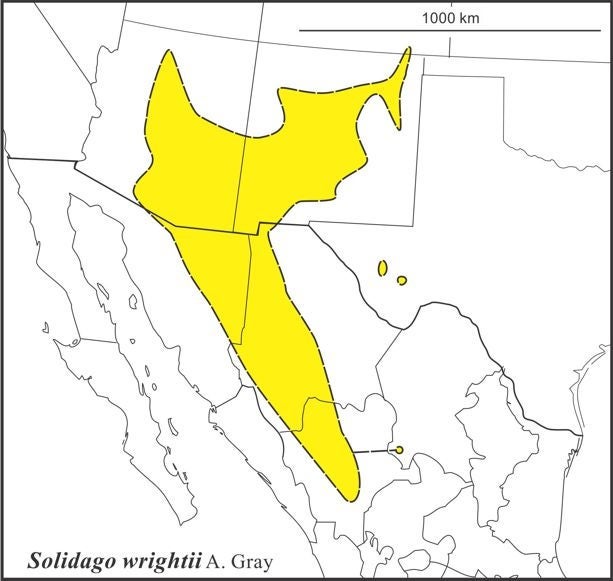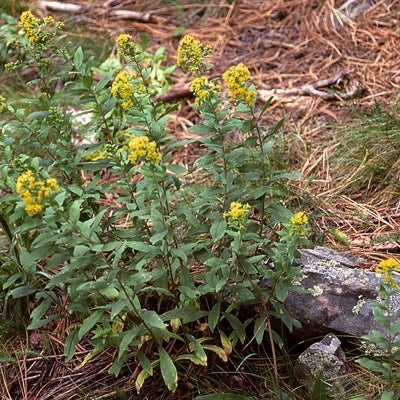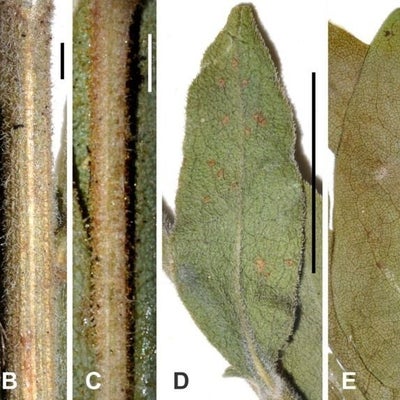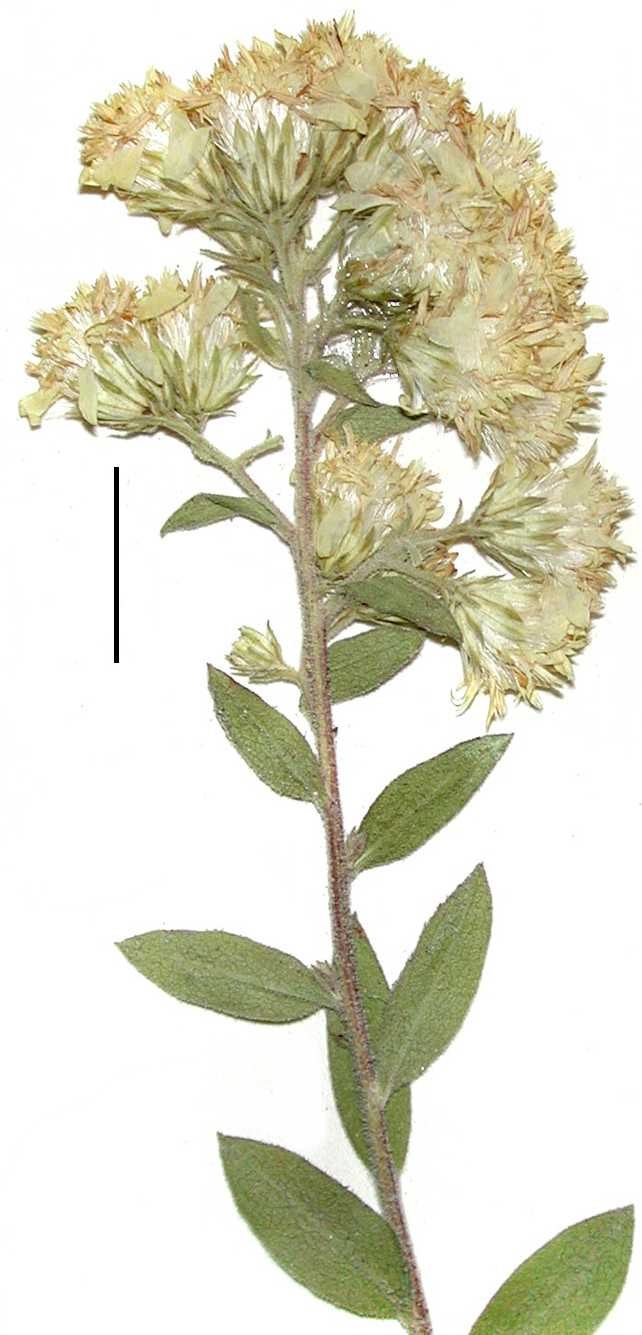Wright's Goldenrod
Solidago wrightii A. Gray is native in grasslands and pine woods of the southwestern U.S. and the Sierra Madre Occidental in Mexico. Like other species in sect. Thyrsiflorae (A. Gray) Semple & J.B. Beck, S. wrightii usually lacks lower stem leaves at the time of flowering. No varieties were recognized by Semple & Cook (2006 FNA). The species is distinguished by broadly lanceolate to narrowly elliptic-ovate hairy stem leaves, having arrays of heads often rounded to somewhat corymbiform (becoming more paniculiform in older shoots) with leafy bracts shorter than the branches, and having moderately densely ovaries/fruit bodiest. It is similar to S. petiolaris which has generally hairless fruits or only sparsely hairy and often elongated narrow inflorescences. It differs from S. spellenbergii which has longer, narrower leaves and nearly smooth phyllaries and very sparsely hairy ovaries/fruit bodies. It differs from S. correllii, which has narrow lanceolate to linear oblanceolate basal and stem leaves that are usually present on stems at flowering. It differs from S. orientalis which has serrate stem leaves. The species is only known at the diploid level (2n=18).

Nesom (2008) reviewed the taxonomy of the species in 2008 and proposed a revised classification recognizing a glandular, non-hairy headed f. adenophora (Blake) Nesom and a non-glandular, hairy headed f. wrightii. These have been treated as varieties in some floras. Hair and gland density on upper leaves is similar to that on phyllaries. Semple et al. (2017) included S. wrightii in a multivariate study of subsect. Thyrsiflorae and found the species to be distinguished by its moderately densely hairy fruits and its leaves that lack serrations. Semple et al. (2017) determined that variations in upper leaf and phyllary gland density and phyllary hair density were continua with no non-abitrary way to split the species in varieties or forms, and they concluded that S. wrightii should not be divided into varieties or forms.
Semple, J.C., Y. Ma, U. Naik, N. Steenhof, and L. Tong. 2017. A multivariate morphometric analysis of Solidago subsect. Thyrsiflorae (Asteraceae: Astereae). Phytoneuron 2017-77: 1–37.
Last revised 19 May 2025 by J.C. Semple
© 2025 J.C. Semple, including all photographs unless otherwise indicated
1-5. Solidago wrightii. 1. Large plant, Semple & Heard 7929, Pima Co., Arizona. 2. Multi-stemmed plant, photo Dan Austin, Chihuahua, Mexico. 3. Stems and leaves, Semple et al 2017 Fig 12 . 4. Small inflorescence, Semple & Heard 8038, Grant Co., New Mexico. 5. Heads and phyllaries, Semple et al 2017 Fig 12.









